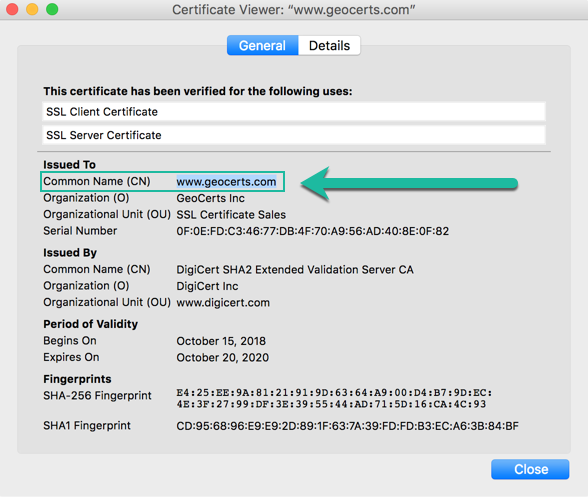Generating a CSR for a Wildcard SSL Certificate
Wildcard SSL certificates will allow you to secure an unlimited number of subdomains for a registered base-domain. Let's say you own the base-domain example.com, then a wildcard for *.example.com can secure any-subdomain.example.com. Basically the asterisk (*), or star is the wildcard and can be any valid subdomain.
About the Common Name (CN)
Every SSL certificate has a Common Name, or CN for short. When generating a Certificate Signing Request (CSR), the CN causes lots of head-scratching. The meaning of Common Name isn't plainly obvious and it can trip up even the most experienced techies, especially when it comes to the CN for a wildcard certificate.
The CN is simply the fully qualified domain name (FQDN) that you want to secure with an SSL certificate. Suppose that you want to secure https://shopping.example.com then the CN would be shopping.example.com.
Strictly-speaking, the naked, or base-domain, like example.com, is not a true FQDN because it does not include a hostname, but nowadays leaving the www hostname out is widely accepted.
The Common Name (CN) for a Wildcard SSL Certificate
The Common Name for wildcard certificates is always starts with an asterisk (* star).
Example: a Common Name of *.hawaii.com will secure:
Will secure...
hawaii.com
www.hawaii.com
maui.hawaii.com
oahu.hawaii.com
blog.hawaii.com
www.hawaii.com
big-island.hawaii.com
Will not secure...
maui.hawaii.net
big.island.hawaii.com
aloha.visit-hawaii.com
Example: a Common Name of *.shop.mystore.com will secure
Will secure...
shop.mystore.com
www.shop.mystore.com
login.shop.mystore.com
support.shop.mystore.com
24-7.shop.mystore.com
Will not secure...
mystore.com
shop.mystore.us
sales.mystore.com
shop.my-store.com
